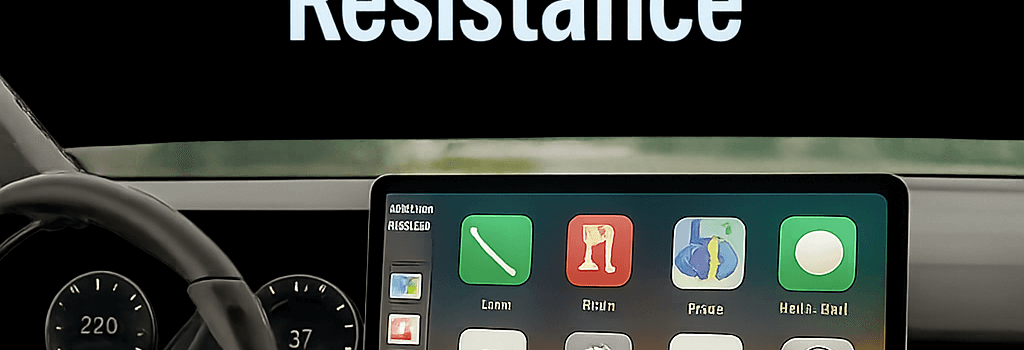Apple’s CarPlay Ultra Faces Automaker Resistance

Apple’s latest in-car platform, CarPlay Ultra, designed to supplant the entire digital cockpit, is meeting stiff opposition from traditional automakers. Despite Apple’s claims that Ultra will deliver seamless integration of iPhone apps, vehicle telemetry, and climate controls on the instrument cluster and central touchscreen, luxury marques such as Mercedes-Benz, Audi, Volvo Cars, Polestar, and Renault have publicly declined adoption. This article explores the technical underpinnings of CarPlay Ultra, the strategic pushback by OEMs, and what the future holds for the digital driving experience.
Industry Pushback: Carmakers Hold the Line
Shortly after Apple announced CarPlay Ultra at WWDC 2025, Mercedes-Benz, Audi, and Volvo Cars confirmed they will not integrate the upgrade. Polestar and Renault—who have partnered with Google and Qualcomm to build a software-first vehicle OS—echoed similar sentiments. An executive at Renault succinctly told Apple:
“Don’t try to invade our systems.”
OEMs argue that consumer demand for standard CarPlay remains high—Apple cites a 98% penetration rate in new U.S. cars—but they also want to monetize their own infotainment stacks and capture vehicle data revenue. General Motors in 2023 went further by ditching both CarPlay and Android Auto in some EVs, highlighting the evolving debate over in-car platform control.
Technical Architecture of CarPlay Ultra
- Platform Foundation: Built on iOS 18’s CarPlay framework and the new “VehicleOS” layer—Apple’s extension for CAN and Automotive Ethernet.
- Data Channels: Implements Automotive Ethernet (100 Mbps) and CAN bus bridging to relay speed, RPM, fuel levels, battery status, and climate data via a secure tunnel.
- UI Integration: Uses
CPTemplateandCarPlayAppAPIs to render native maps, music, and third-party UIs at up to 60 fps on 12.3–14.5″ TFT or OLED displays. - Security: Leverages end-to-end encryption (TLS 1.3) and ISO 21434 best practices. Vehicle data remains sandboxed; no additional CAN frames are shared with iPhone.
- OTA Updates: Over-the-air delivery via Apple’s Secure Software Update Service, compatible with existing TPMS, ADAS, and MCU firmware channels.
Data Privacy and Security Considerations
Automotive cybersecurity experts highlight potential risks when a tech giant gains deeper access to car internals. Dr. Jane Smith of IHS Markit notes,
“Any intermediary platform must strictly adhere to UNECE WP.29 regulations and OEM security policies. Apple’s current model is read-only, but future write access could become contentious.”
Apple insists CarPlay Ultra’s design prevents write commands to critical ECUs, isolating user interface functions from safety-critical systems.
Infotainment Wars: OEM vs. Big Tech
Facing pressure from Chinese rivals that bundle advanced digital cockpits and AI assistants, Western carmakers are accelerating in-house efforts:
- Volkswagen’s Volkswagen.OS on QNX and Linux, featuring integrated Alexa and third-party streaming.
- BMW’s iDrive 8 with native Apple CarPlay, Android Auto, and embedded navigation using HERE Maps.
- Renault’s Alliance Software Platform built on Qualcomm Snapdragon Automotive SC8280xp.
These proprietary systems enable OEMs to create subscription services for navigation updates, voice assistants, and premium audio—revenue streams Apple does not share.
Market Impact and Future Outlook
According to McKinsey’s 2023 survey, 50% of car buyers won’t purchase a vehicle lacking CarPlay or Android Auto, and 85% of current users favor these interfaces over OEM UIs. Yet analysts predict a bifurcation by 2030: entry-level models will standardize on Android Automotive OS or open platforms, while premium marques will invest in bespoke digital cockpits with integrated AI and embedded connectivity.
Simon Middleton, partner at McKinsey, observes:
“Western OEMs are chasing differentiation in a saturated market. Software and in-car services will define the next decade, pitting automakers directly against Big Tech.”
Case Study: Aston Martin’s Hybrid Approach
Aston Martin became the first to ship CarPlay Ultra this summer, integrating it into a custom Linux-based infotainment ECU but retaining physical dials and switches for core functions. Data sharing was strictly limited: vehicle telemetry lives in AM’s secure vault, and Apple only accesses UI endpoints. This compromise paved the way for other luxury marques to revisit negotiations.
Conclusion: A Battle for the Cockpit
As vehicles evolve into software-defined platforms, control over the human–machine interface will be the new battleground. Apple’s ambition to own the dashboard clashes with automakers’ drive to protect their intellectual property, data streams, and service revenues. The resolution will shape the digital driving experience for years to come.